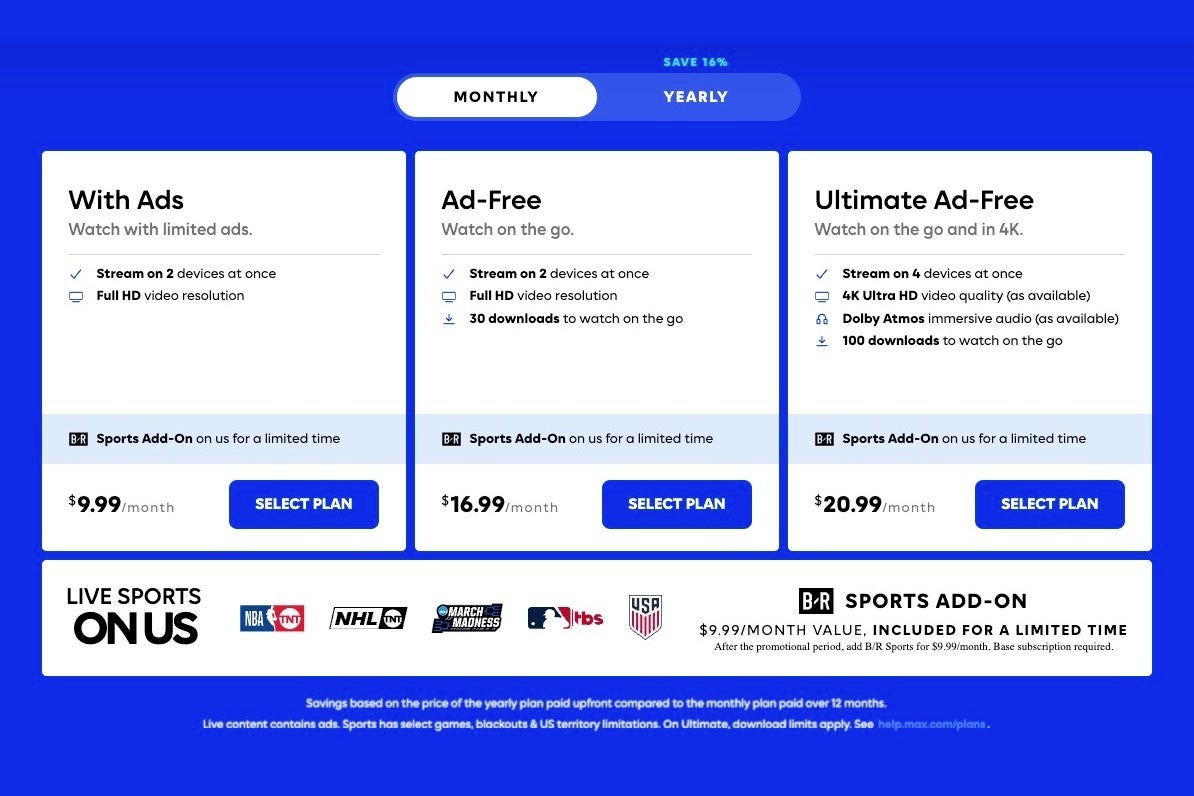As of today, new subscribers will be paying $16.99 per month for the standard ad-free plan, a dollar more than the previous price. For those who prefer the 4K ad-free plan, the monthly cost is now $20.99, also a dollar more than before. Existing Max subscribers won’t see the change immediately, but they can expect the price increase to take effect starting with their next billing cycle on or after July 4th.
If you’re a fan of the ad-free experience and prefer to pay annually, you’ll also see an increase. The standard ad-free yearly plan will now cost $169.99 (up from $149.99), and the 4K ad-free yearly plan will be $209.99 (up from $199.99). However, for those who don’t mind watching a few ads, there’s a silver lining: the price for the ad-supported subscription will remain unchanged at $9.99 per month or $99.99 per year.

Current Max plans and pricing | Credit: Max
This isn’t the first time that Warner Bros. Discovery, the parent company of Max, has raised prices. Last year, they also bumped up the cost of their streaming service. And it appears they’re not alone in this trend. NBCUniversal is planning to increase the price of Peacock by $2 in July, and Disney is set to start charging customers who share passwords this month. The moves to raise prices by all these companies are becoming more increasingly tough to keep up with.The move to raise subscription prices comes at a time when streaming services are investing heavily in content and technology. While these price increases might not be popular with consumers, they’re likely necessary for the companies to continue providing high-quality content and remain competitive in the ever-growing streaming market, however detrimental they may become to the viewer’s wallets.
